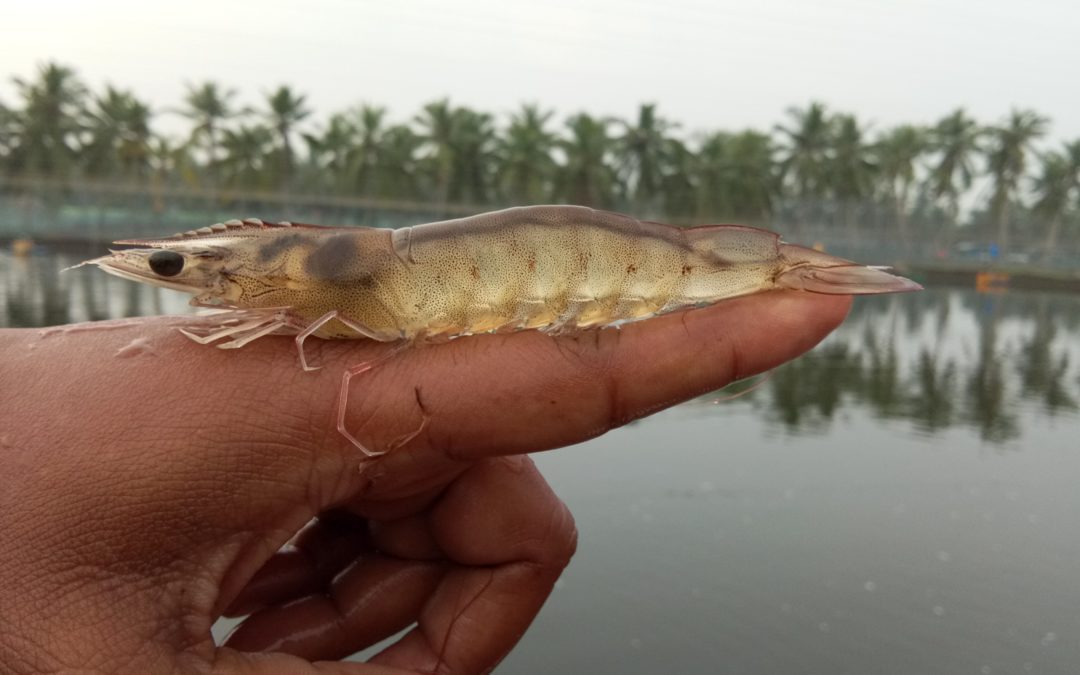L. vannamei is native of pacific coast of Mexico and Central and South America as far south as Peru. It is mainly found on mud bottoms, down to a depth of 75 m. It is commonly known as white legged shrimp or Mexican white shrimp. It is greyish-white in color. The maximum weight of the females in the wild is about 120 g. The males are smaller at 60-80g. It lives in the column and prefers clayey loam soil. For L. vannamei the growth at 30°C is much higher than at 25°C. The optimal range of temperature for the species is between 30 and 34°C. At 20°C growth virtually stops. It can tolerate salinity levels of 0 to 50 ppt. Growth is uniform within 10-40 ppt. They can grow in freshwater also but the growth is slower below 10 ppt. pH range of 7 to 9 is tolerated with optimal growth at pH 8.0. Dissolved oxygen levels above 4.5 ppm are required for optimal growth. Turbid water with flocculated particles of more than 0.5 micron resulted in better growth than clean water mainly because of the presence of algae and bacteria. Total Ammonia -N and Nitrite – N levels should be less than 1 ppm and 0.1 ppm respectively.
Due to high temperatures and water scarcity the salinity levels in the pond water increases to more than 40 ppt. In Vannamei cultures the normal pathogenic species found are Vibrio species, Vibrio species are halophillic in nature and can proliferate in faster rates in high salinities. Commercial and commonly used probiotics are not halophillic in nature, so application of probiotics has lesser effects in the reduction of Vibrio species.
In higher salinities the metabolic rate and feed conversion ratio are less when compared with normal saline conditions. In higher salinities the pathogenic phytoplanktons (Blue green algae) numbers increase which inturn causes the fluctuation in pH, DO saturation etc. In higher salinities calcium levels would be higher which leads to hard shell and creates hinderance in osmoregulation. The fluctuations in salinities can cause irregular molting cycles, stress to the shrimps because of molting and abnormal shell formations, muscle cramps etc.
Sanero Ecosense Halo are special probiotics which are halophillic in nature and can survive and proliferate in higher salinities and can withstand in fluctuating salinities. The strains are capable of producing effective exoenzymes which helps in the conversion of complex organic matter into simpler forms. The strains effectively eliminate the pathogenic Vibrios by producting antibacterial substances.

